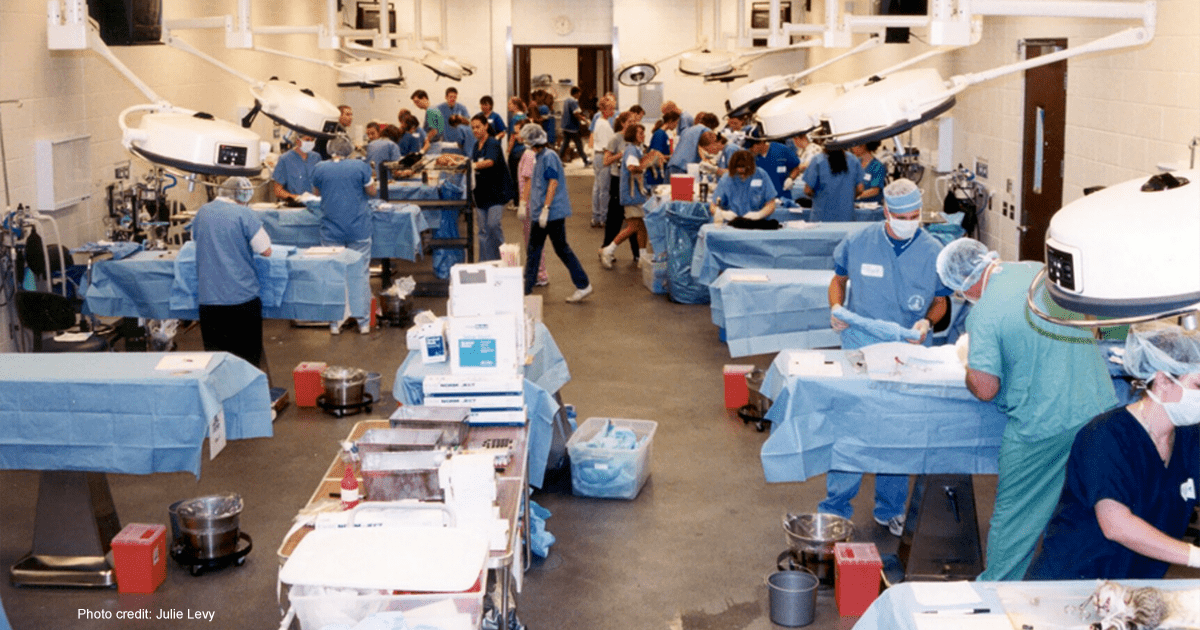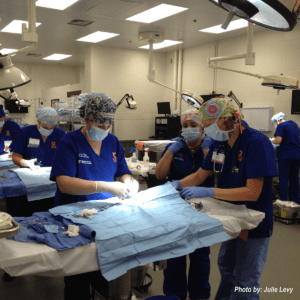
Mar 04, 2024 Addressing the Veterinarian and Veterinary Technician Shortage: Innovations in Animal Healthcare Access
 The animal healthcare industry faces a formidable challenge: a persistent shortage of veterinarians and veterinary technicians. The shortage stresses existing practitioners, resulting in prolonged wait times for companion animal clients, inadequate care in equine and bovine practice sectors, and significant challenges in shelter medicine. Furthermore, the diminishing accessibility to care has become a pressing concern, garnering attention from national, regional, state, and local news agencies. Meanwhile, the demand for veterinary care and services continues to rise, particularly after the Covid-19 pandemic. With millions of households owning pets in the United States, the capacity to access care is severely limited. Although existing Veterinary Schools have increased class sizes, the collective output of graduating students fails to meet the growing need. Plans to establish new veterinary colleges are underway, but it will take several years to admit students.
The animal healthcare industry faces a formidable challenge: a persistent shortage of veterinarians and veterinary technicians. The shortage stresses existing practitioners, resulting in prolonged wait times for companion animal clients, inadequate care in equine and bovine practice sectors, and significant challenges in shelter medicine. Furthermore, the diminishing accessibility to care has become a pressing concern, garnering attention from national, regional, state, and local news agencies. Meanwhile, the demand for veterinary care and services continues to rise, particularly after the Covid-19 pandemic. With millions of households owning pets in the United States, the capacity to access care is severely limited. Although existing Veterinary Schools have increased class sizes, the collective output of graduating students fails to meet the growing need. Plans to establish new veterinary colleges are underway, but it will take several years to admit students.
The Urgent Need for Solutions:
Veterinary medicine is at a critical juncture where innovative solutions are urgently needed to address the pressing challenges surrounding Access to Veterinary Care. The consequences of the past 35 years (1978-2013 – when the number of US households increased by 80%), during which only one new veterinary school was established, are now evident. The failure to match the growth in the human (and companion animal) population has exacerbated the shortage of veterinary professionals. However, this crisis has sparked a notable initiative: the launch of the Veterinary Professional Associate (VPA) qualification. The VPA role is similar to the successful Nurse Practitioner and Physician Assistant system in human medicine.
The Coalition for Change:
The Coalition for the Veterinary Professional Associate (CVPA), a pending IRS 501(c)(4) nonprofit organization, has emerged to address the shortage of veterinary professionals. With strong support from various sectors, including universities, rural communities, animal shelters, and companion animal practices, this coalition aims to advocate for and facilitate the establishment of these new mid-tier veterinary providers.
Driving Force and Expertise:
Comprising over three dozen veterinary leaders from academia, board-certified veterinarians, industry leaders, credentialed veterinary technicians, and subject matter experts, the CVPA is well-equipped to tackle this challenge. The coalition has established five dedicated committees: Standards, Certification, and Accreditation; Governance and Finance; Legislative Affairs; Industry Liaison; and Marketing, Communications, and Public Relations. These committees will shape the implementation of the VPA role and ensure its success.
The Role of VPAs:
VPAs will support veterinarians by delivering veterinary medical care across various specialties and clinical settings. VPAs will receive comprehensive training to operate in environments such as companion animal hospitals, urgent care facilities, shelter medicine centers, large animal practices, and ambulatory and food animal care facilities, among others. By expanding the scope of veterinary care providers, the VPA initiative aims to alleviate the strain on practitioners and improve access to quality care for all animals.
In conclusion, innovative solutions such as the Veterinary Professional Associate program offer hope in addressing the longstanding challenges facing the animal healthcare industry. With collaborative efforts from stakeholders and dedicated initiatives like the CVPA, we can pave the way for a more sustainable and accessible future for veterinary care.
To learn more about the CVPA, visit www.cvpa.vet. To contact the author, visit www.murtdvm.com.
Dr. Robert (Bob) Murtaugh graduated from the University of Minnesota, College of Veterinary Medicine in 1980, completed a residency at the Ohio State University in 1984, and was board-certified in veterinary internal medicine (DACVIM) in 1985. He was a faculty member at Tufts University School of Veterinary Medicine from 1984 to 1998 and was Hospital Director of both the Large and Small Animal Teaching Hospitals. From 1998 to 2000, he served as the Chief of Staff at the nonprofit Dove Lewis Emergency Animal Hospital Group in Portland, Oregon, before joining VCA Animal Hospitals (2000 to 2015) as a practicing Specialist, Medical Director, and Regional Medical Director, encompassing primary care and specialty practice oversight and operations in New England, New York, New Jersey, the Mid-Atlantic, Chicago, New Mexico, and Southern California. Bob joined Pathway Vet Alliance, now Thrive Pet Healthcare, in 2015 as a partner and Chief Medical Officer. He has contributed to the growth of Thrive Pet Healthcare from 15 to more than 350 veterinary locations, providing a variety of quality small and large animal services in more than 37 States. Bob is the founding Dean of the College of Veterinary Medicine at Rocky Vista University (Billings, Montana) and Chair of Veterinary Medicine in the National Academies of Practice. He is the president of the Coalition for The Veterinary Professional Associates (CVPA).


